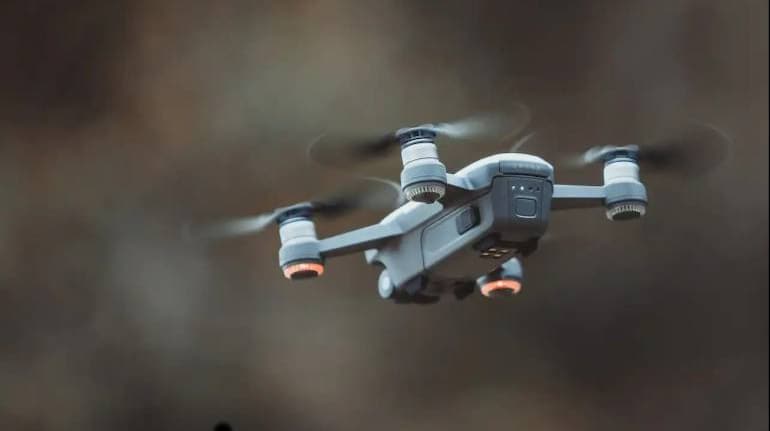



State governments Karnataka, Haryana, Punjab, Tamil Nadu and Madhya Pradesh are working with drone manufacturing companies, farmer producers organisations and state agriculture universities to roll out drones that can be used for fertilizer spraying in the next two-three months, said multiple sources close to the development.
“State governments are looking to take advantage of the 100 percent subsidy offered by the central government for the purchase of drones for agricultural utilisations and are looking to improve efficiency and output by using drones,” said a senior government official.
The testing of drones to be used for spraying fertilisers in Uttar Pradesh, Punjab and Haryana has already been completed and farmer producer organisations in these states are expected to start using the drones very soon, he added.
“Multiple models are being considered for the rollout of drones to be used for farmers, and state government are working with state universities as well to help familiarise farmers with the use of drones,” said another government official.
He said that drones will be bought by either state agriculture universities or Indian Council of Agricultural Research (ICAR) institutes across the country, who will then work with farmers to use drones on their fields for a fee.
Government officials, quoting initial estimates, also said that farmers will be able to rent out drones that have capacity to carry a 10-kg payload for as little as Rs 350-450 per acre.
“The calculation is based on the assumption that a drone equipped with multiple batteries will be utilised for at least six hours a day, covering about 30 acres of farmland,” said the second government official.
The central government in January had announced a 100 percent grant up to the cost of Rs 10 lakh to Agricultural Institutes for the purchase of drones for farming and its allied activities.
As part of the Union Budget for 2022-23, the government had also announced that ‘Kisan’ drones will be used for crop assessment, digitisation of land records and spraying of insecticides and nutrients.
Last week, the Ministry of Agriculture and Farmers Welfare, and the Central Insecticides Board and Registration Committee granted interim approval for the use of drones for the spraying of around 477 insecticides, fungicides, and plant growth regulators for commercial use for two years.
Drone industry expects move to boost market in India
Smit Shah, President, Drone Federation of India, said that the decision to give interim approval to the knapsack registered pesticides shall boost the utilization of Kisan Drones.
Shah added that the move is not only expected to boost the drone market in India but will help increase efficiencies on the ground level as well.
In ground spraying, around 100-120 litres of water mixed with 10 litres of pesticides for an acre of land and takes around 2-2.5 hours, said Shah. However, when using a drone only 10-12 litres of water is needed with five litres of pesticides and process is likely to take around 10-15 minutes.
Shah also said that drones that can be used for fertiliser spraying are likely to cost between Rs 6-12 lakh in the current market.
Similarly, Abhishek Burman, co-Founder and CEO at General Aeronautics, said that the use of drones will eliminate overuse of chemicals and can be much more efficient than a traditional sprinkler or manual sprinkling of chemicals.
He added that a drone could reduce pesticide usage of a farmer by as much as 80 percent and water usage by 95 percent.
Chennai-based Garuda Aerospace is already working on service model where they sell drones to village level entrepreneurs or pesticide and fertilisers retailers.
“We are also setting up service centres in collaboration with the Indian Council for Agricultural Research. We have also tied up with 300 farmer associations. There are 22 crore acres of orders which we have secured which would need spraying for the next three years,” the company’s founder Agnishwar Jayaprakash said.
Experts sceptical
While market experts have also hailed the government’s move to facilitate the drone market in India, they are wary of the impact it can have on smaller farmers.
“While the use of drones will help improve efficiencies in farming, it can also lead to a rise in unemployment in rural areas unless drone manufacturing is setup in rural areas as well,” said a former secretary in the Department of Science and Technology.
He added that smaller farmers often work part time on large farms for extra income and the use of drones is likely to hit the pockets of these farmers initially if drone acceptance is widespread across India.
Agriculture experts are also sceptical about how the use of drones will help increase the income of farmers.
“Will it increase the farmers’ income? That’s the question nobody wants to answer,” said agriculture and food policy analyst Devinder Sharma.
He added that spraying pesticides and fertilisers will benefit industries the most.
“One way to make it safe for farmers is to use less harmful chemicals and organic pest management methods. That would be a better way than replacing humans with machines to do dangerous work,” Sharma said.
Narsimha Reddy of Pesticide Action Network, a non-government organisation that opposes the use of pesticide in agriculture, also said that government approval for the use of drones to spray pesticides without proper regulatory standards for the operations and spraying done by drones may be both harmful for humans and the land.
Discover the latest Business News, Sensex, and Nifty updates. Obtain Personal Finance insights, tax queries, and expert opinions on Moneycontrol or download the Moneycontrol App to stay updated!
Find the best of Al News in one place, specially curated for you every weekend.
Stay on top of the latest tech trends and biggest startup news.